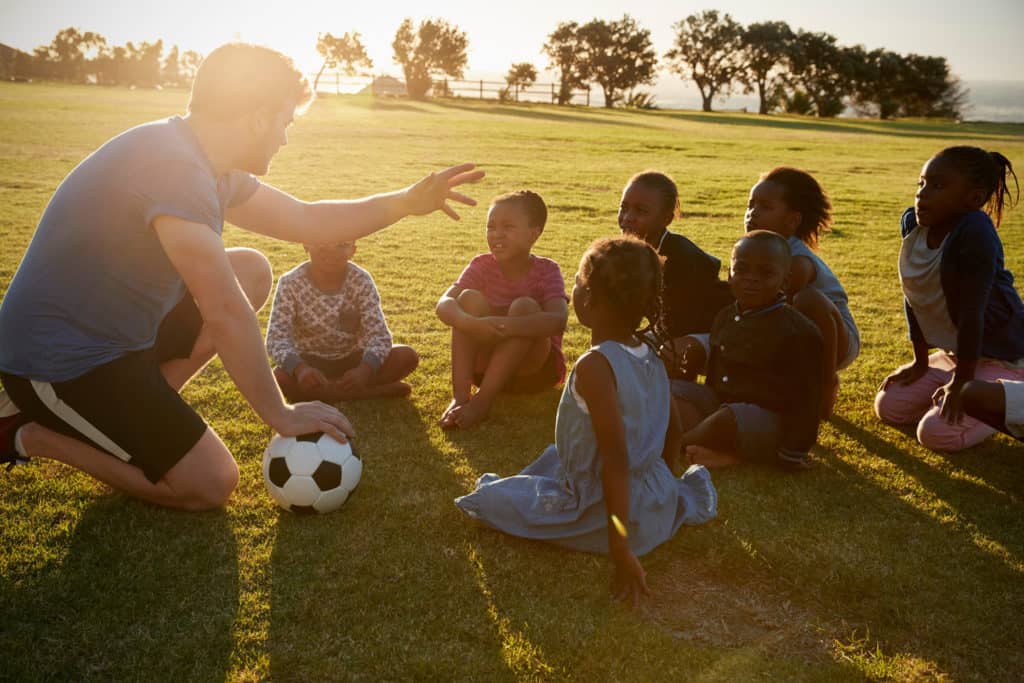
Being a PE Teacher
Being a PE teacher and working in the education system can be incredibly challenging but also hugely rewarding career. Helping young people to have a healthier lifestyle, improve their understanding of their bodies, and to have more confidence in themselves can leave a lasting positive impact on a pupil’s life. PE lessons offer a foundation for all young people to fall in love with physical activity, to interact with each other and the environment in a way that the classroom can’t, and PE teachers have the power to promote wellbeing in a way that other teachers often can’t.
This of course will only happen if those experiences are both positive and meaningful for the pupils. Finding good sources of evidence-informed best practice for PE however, can be hard, which is why we started PE Scholar. Our aim was to offer incredible teaching materials, courses, and insight, to help physical education thrive, and make more of a positive difference to as many young peoples lives as possible.
In this article, we want to head back to basics, to discuss what a PE teacher is, how you become one, and much more. By the end of the article, we hope that anyone who is curious about the role will have a better understanding of the role of a physical education teacher.
What is Physical Education?
Physical education involves a lot more than getting pupils to play a game of football. It’s about developing key skills and attributes to promote human flourishing in children, from helping them to establish valuable a range of movement skills to nurturing the confidence and competence to move well and develop self-motivated individuals who are able to go on into adulthood and lead healthy active lifestyles. Young people can develop essential life skills within PE such as improved communication skills, teamwork, and leadership alongside better physical fitness and much more.
Teaching Physical Education?
To become a PE teacher it can be a long process, and being a good PE teacher can be an even harder process. PE is always evolving at every level to better meet the needs of today’s pupils – that means the why, how and what of PE is ever evolving in response to the needs and motivations of young people and their unique contexts. As we detail on our site, new research is always changing the field, and we owe it to every child to prepare lessons with this new research in mind. We are passionate about ensuring PE stands for Positive Experiences and not Public Embarrassment for all children. PE can provide the springboard for a healthy and active lifestyle and positive relationship with sport, physical activity and movement but it also has the potential to turn young people off.
The ultimate goal of teaching PE should be to make sure that the pupils enjoy and make progress in their lessons with the underpinning aim of nurturing Physical Literacy. If children enjoy PE, they are far more likely to carry on engaging with sport, physical activity and healthy lifestyle choices when they are older.
How to Gain Qualified Teacher Status for PE?
Most PE teachers study for a sports-related degree then complete a Post Graduate Certificate in Education (PGCE), which is a year-long course specifically designed to gain Qualified Teacher Status (QTS). There are a wide range of Initial Teacher Education (ITE) providers ranging from universities to school-based providers. It is also possible possible and increasingly popular to enter straight onto an Undergraduate degree with QTS. Before applying we recommend that you research the role in detail and really consider if choosing a career in teaching is for you.
What happens in the Initial Teacher Training Period?
At first, you will learn about the theory of teaching and shadow teachers. You won’t be placed in charge of a classroom until you are properly prepared. The aim is to arm you with the tools and examples of best practice before you start team teaching and finally taking over whole lessons yourself. It is a staggered approach to make sure that you are ready and can control a classroom by following the various school policies and procedures properly (for example behaviour management). You will be supported by an academic tutor and a school mentor.
Routes to Becoming a PE Teacher?
Alongside the traditional route of a PGCE, you can also have school-led workplace training, which is where you work in a school and train alongside it. Some undergraduate degrees can also have the QTS as part of the course, so be aware of those when applying. There are many routes to becoming a PE teacher, so finding the right one for you is key.
PE Teacher Courses Offered at PE Scholar
Here at PE Scholar, we also offer a variety of different courses to help provide training opportunities for your career progression. We have courses geared towards different aspects of curriculum design, pedagogy, assessment and more. The aim is to offer recourses and knowledge that can improve PE provision and keep your practice at the cutting edge of research informed ideas.
Why Should You Teach PE?
There are many reasons why you should consider a career in teaching PE. For one, it is a great way to help children find and develop their passion for sport and physical activity. Finally, teaching PE can also help children develop social skills such as teamwork and also intra-personal skills such as integrity, resilience and responsibility. Helping young people grow into well rounded adults is certainly very rewarding!
Further resources and information for PE teachers entering the profession
Preparing to become a PE teacher course
Wanna Teach PE? An A-Z guide for the next generation of aspiring teachers
A synopsis of the Wanna Teach PE? book
Advice on Securing your first PE teacher job


[…] Insight into Being a PE teacher: all you need to know […]
[…] Insight into Being a PE teacher: all you need to know […]